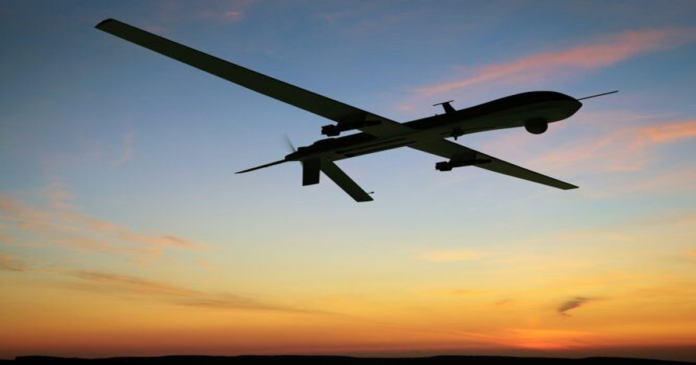India recently forbade domestic producers of military drones from utilising components made in China due to worries about security flaws.
India bars makers military drones: This move coincides with New Delhi’s pursuit of military modernization, which calls for increased use of unmanned quadcopters, long-endurance systems, and other autonomous platforms, as well as tensions between the nuclear-armed neighbours.
Nonetheless, defense and industry experts have indicated that India’s security officials harbor concerns regarding the potential compromise of intelligence-gathering due to the presence of Chinese-made components in various aspects of drones, including communication functions, cameras, radio transmission, and operating software. These concerns arise as the emerging Indian industry endeavors to fulfill the military’s requirements.
Three of these individuals, along with some of the six additional government and business leaders whom Reuters spoke to, preferred to remain anonymous either due to lack of authorization to speak to the media or owing to the sensitivity of the subject.
Inquiries from Reuters went unanswered by the Indian defence ministry.
Documents indicate that India’s strategy, initially reported by Reuters, is being implemented through military tenders. This approach complements the gradual import restrictions on surveillance drones that have been in effect since 2020.
“Indian Military Imposes Restrictions on Drone Contracts Amid Concerns Over Security and Country of Origin”
According to minutes examined by Reuters, Indian military officials informed prospective bidders at two meetings in February and March to discuss drone contracts that equipment or subcomponents from “countries sharing land borders with India will not be acceptable for security reasons.”
The military representatives were not named in the minutes. One contract document demanded that providers identify the country of origin of their components because such subsystems allegedly contained “security loopholes” that exposed sensitive military data.
Despite worries about cyberattacks, a senior defence official told Reuters that China was being referred to when the phrase “neighbouring countries” was used. He also noted that Indian industry had grown reliant on the world’s second-largest economy.
Beijing has refuted claims that it is a party to cyberattacks.
China’s commerce ministry, which implemented export restrictions on select drones and drone-related equipment last week, did not respond to inquiries about India’s actions.
In 2019, the US Congress barred the Pentagon from procuring or utilizing drones and parts made in China.
manufacturing difficulty
In order to counter perceived threats, notably those from China, whose forces have recently engaged Indian soldiers along their disputed border, Prime Minister Narendra Modi has worked to strengthen India’s drone capabilities.
75% of the 1.6 billion rupees ($19.77 billion) India has budgeted out for military modernization in 2023–2024 would go to domestic industries.
However, by requiring manufacturers to find components abroad, the embargo on Chinese parts has increased the cost of producing military drones locally, according to government and industry experts.
70% of the items in the supply chain, according to Sameer Joshi, founder of Bengaluru-based NewSpace Research and Technologies, a provider of small drones to the Indian military.
So, he continued, “If I talk to, say, a Polish guy, he still has his components that are coming from China.” Joshi noted that switching to a non-Chinese pipeline caused costs to rise significantly. He said that some businesses continued to import materials from China but would “white-label it, and kind of keep the costs within that frame”.
gaps in technology
India depends on foreign suppliers for both individual components and complete systems since it lacks the expertise to produce some types of drones.
According to Y. Dilip, director of the state-run Aeronautical Development Establishment (ADE), a government-funded initiative to create a domestic Medium Altitude Long Endurance unmanned system is at least half a decade behind schedule.
In order to achieve the military’s aim of a drone that can reach an operating altitude of 30,000 feet and remain in the air for 24 hours, the platform, known as Tapas, still requires modification, according to Dilip.
He claimed that the engines were our main source of restriction because neither those made in India nor the imported versions were up to the task.
Anticipating the initiation of military trials this month for Tapas, ADE is concurrently working on the development of a High Altitude Long Endurance platform and a stealth unmanned platform. These projects, expected to take several years to complete, are underway.
India stated in June that it would pay more than $3 billion for 31 MQ-9 drones from the US to cover these shortages. Drone specialist R.K. Narang of the government’s Manohar Parrikar Institute for Defence Studies and Analyses stated, “There has to be coherent national strategy to fill the technology gaps” to produce goods that are profitable.
“Private Sector Allocation in Indian Defense R&D Budget and Challenges Ahead”
In February, Finance Minister Nirmala Sitharaman promised that the private sector will receive one-fourth of this year’s 232.6 billion rupee ($2.83 billion) budget for defence research and development. However, Narang claimed that the country’s major private corporations made scant investments in R&D.
Joshi claimed that due to lengthy lead periods and the possibility that orders would not materialise, venture investors avoided investing in military enterprises.
India would need to endure greater prices in order to increase domestic manufacture, according to the senior army official.
“The price will increase by 50% if I buy equipment from China today but declare that I want to manufacture it in India,” he remarked.
“As a nation, we must be prepared to assist in this ecosystem’s development.”

